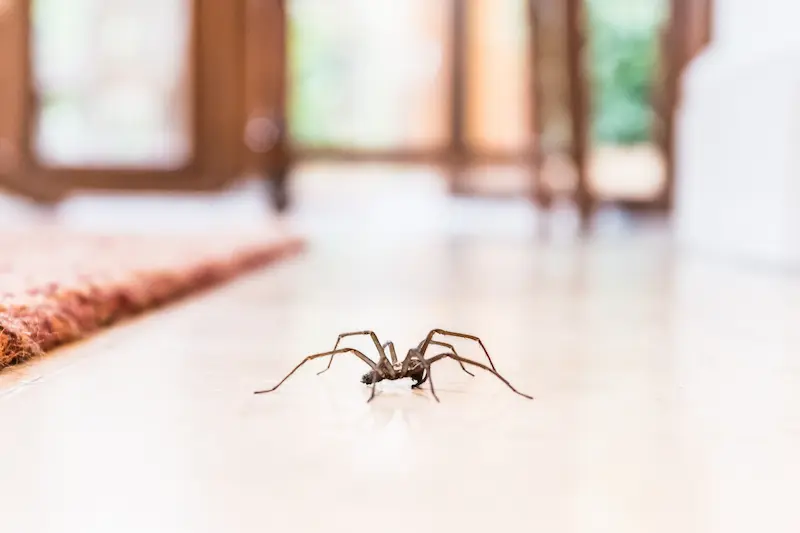How to Know When a Spider Is Poisonous
Serving Pompano Beach, Boynton Beach, and surrounding areas

If you notice spiders regularly, you might be wondering if it’s possible to determine if a spider is poisonous just by looking at its appearance. Unfortunately, the answer is no. There are no visible traits or markings that guarantee whether a spider is poisonous or not. The most reliable method is to become familiar with the spiders native to your region, so you can identify them accurately. The question is, which poisonous spiders should Florida residents watch out for?
Keep reading to find out how to recognize poisonous spiders in Florida, and the details to look for if one crosses your path.
Start With A Quote On Us
Click below to contact Petri Pest Control for a FREE pest control quote.
Are There Poisonous Spiders in Florida?
Before we dive into the identification guide, let’s clear up a common misconception: spiders aren’t poisonous, they’re venomous. Although people often use these terms interchangeably, they mean different things. While both can lead to illness, the delivery method is what sets them apart. So for accuracy’s sake, remember: spiders are venomous, not poisonous.
Not sure what the difference is? Here’s a quick comparison:
- Venomous: The illness comes from a bite or sting. Examples include spiders and many species of snakes.
- Poisonous: The illness is from ingesting something toxic, such as certain mushrooms or plants.
Are There Venomous Spiders in Florida?
Now that we’ve sorted out the terminology, let’s go over the types of venomous spiders found in Florida. There are more than 1,000 spider species across the United States, and most of them are not dangerous to humans. However, Florida is home to a few species that can deliver a painful bite with serious side effects. The three to be most aware of are the brown recluse, black widow, and hobo spider.
Brown Recluse Spider
Encounters with brown recluses are usually accidents. People are typically bitten when the spider gets trapped in clothing, bedding, or towels and is pressed against the skin. While they aren’t naturally aggressive, they do bite when disturbed.
At first, a bite might seem mild, but discomfort usually intensifies within hours. Victims often report extreme pain and flu-like symptoms, including chills, fever, and body aches. Visibly, the bite features a pale center, surrounded by purplish or bluish tones and a red outer ring. The venom can lead to tissue damage, potentially creating an open sore that may take months to recover. If you’ve noticed any signs of brown recluses around your home, look into professional spider control immediately.
Brown Recluse Characteristics:
- Tan to dark brown coloring
- Has a violin-shaped marking on its back to its head
- Approximately ¼” – ½” long
- Semicircle pattern of three pairs of eyes
When to Seek Medical Help: If fever conditions worsen or you develop serious symptoms like breathing issues or chest pain, seek emergency care.
Black Widow Spider
Despite their menacing appearance, black widows don’t typically try to start fights. They usually bite when they feel they’re in danger. The spider most people picture, which has a glossy black color and red hourglass marking, is the female. Males are smaller, lack the red hourglass, and are not harmful to humans.
A bite from a female black widow can result in nausea, muscle pain, sweating, and cramping, especially in the abdomen.
- Shiny black coloring on almost its entire body
- Red hourglass shape on the abdomen. May also have white or red spots on the abdomen.
- Approximately 1 ½” – 1 ⅜” long
- Eight eyes
When to Seek Medical Help: If symptoms like cramping, nausea, or pain worsen or become hard to manage, get medical attention right away.
Hobo Spider
Hobo spiders are often confused with brown recluses due to their similar size and coloring, which has led to ongoing debate about how dangerous they really are. Typically, hobo spider bites are not considered severe.
Reactions are usually limited to redness, mild swelling, and discomfort. However, because hobo spiders resemble more dangerous species, it’s important to pay attention to your symptoms and consult a medical professional if they escalate.
- Light to medium brown blended coloring
- One dark line between two lighter lines on its head with a yellow and gray pattern on its abdomen
- Approximately 1” – 1 ¾” long
- Eight eyes in two straight rows
When to Seek Medical Help: If you suspect the spider was actually a brown recluse or you’re experiencing intense symptoms, it’s best to get checked by a doctor.
Help Keep Your Florida Home Free of Harmful Spiders
No one wants venomous spiders lurking around their home. These dangerous pests can pose a serious risk to people and pets if they’re free to roam.
Petri Pest Control offers professional spider control services that can quickly detect infestations and remove these unwanted guests. Reach out today for a free estimate and take the first step toward a more comfortable, spider-free home.
Back to Spider Exterminators – Control & Removal